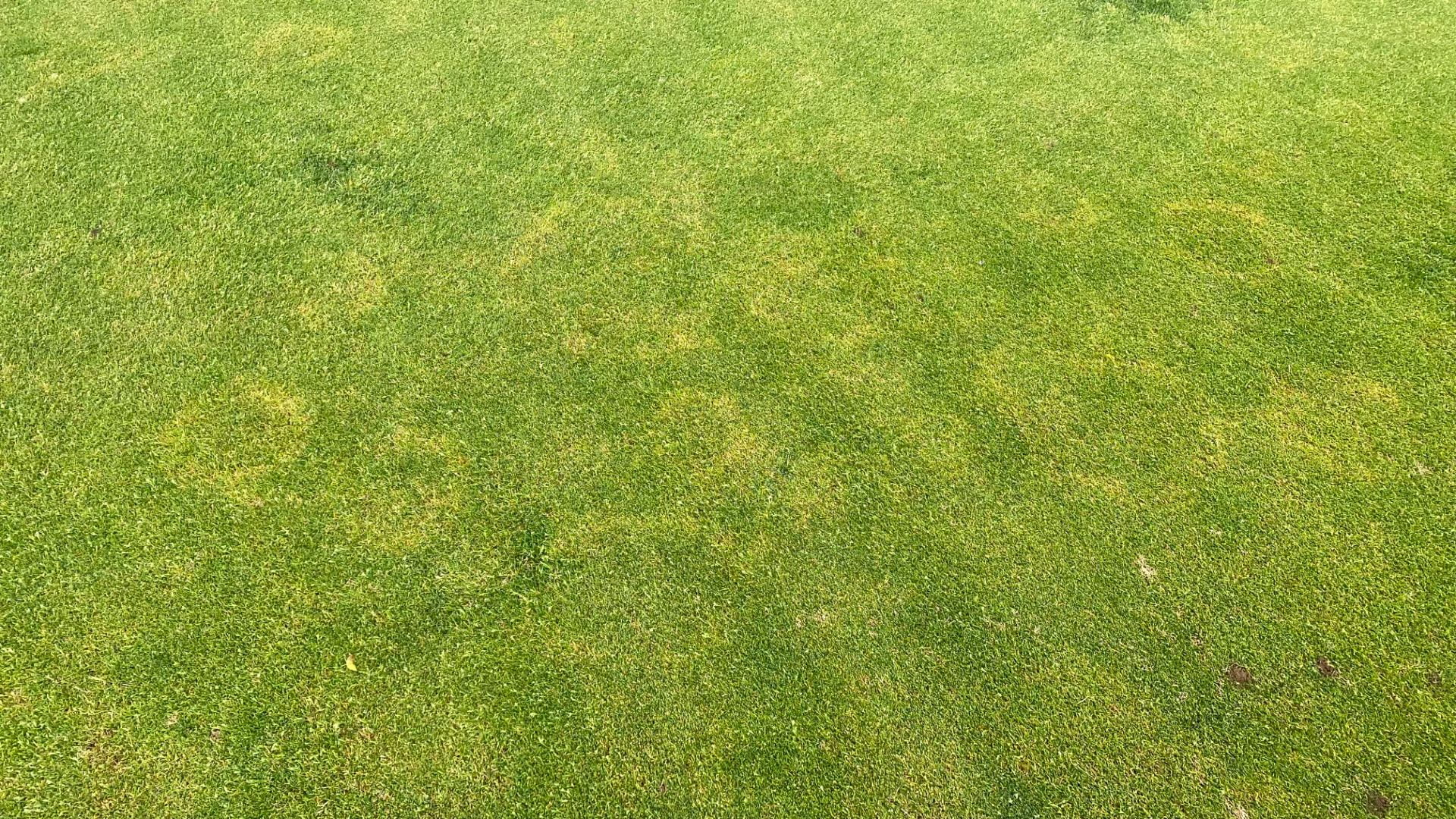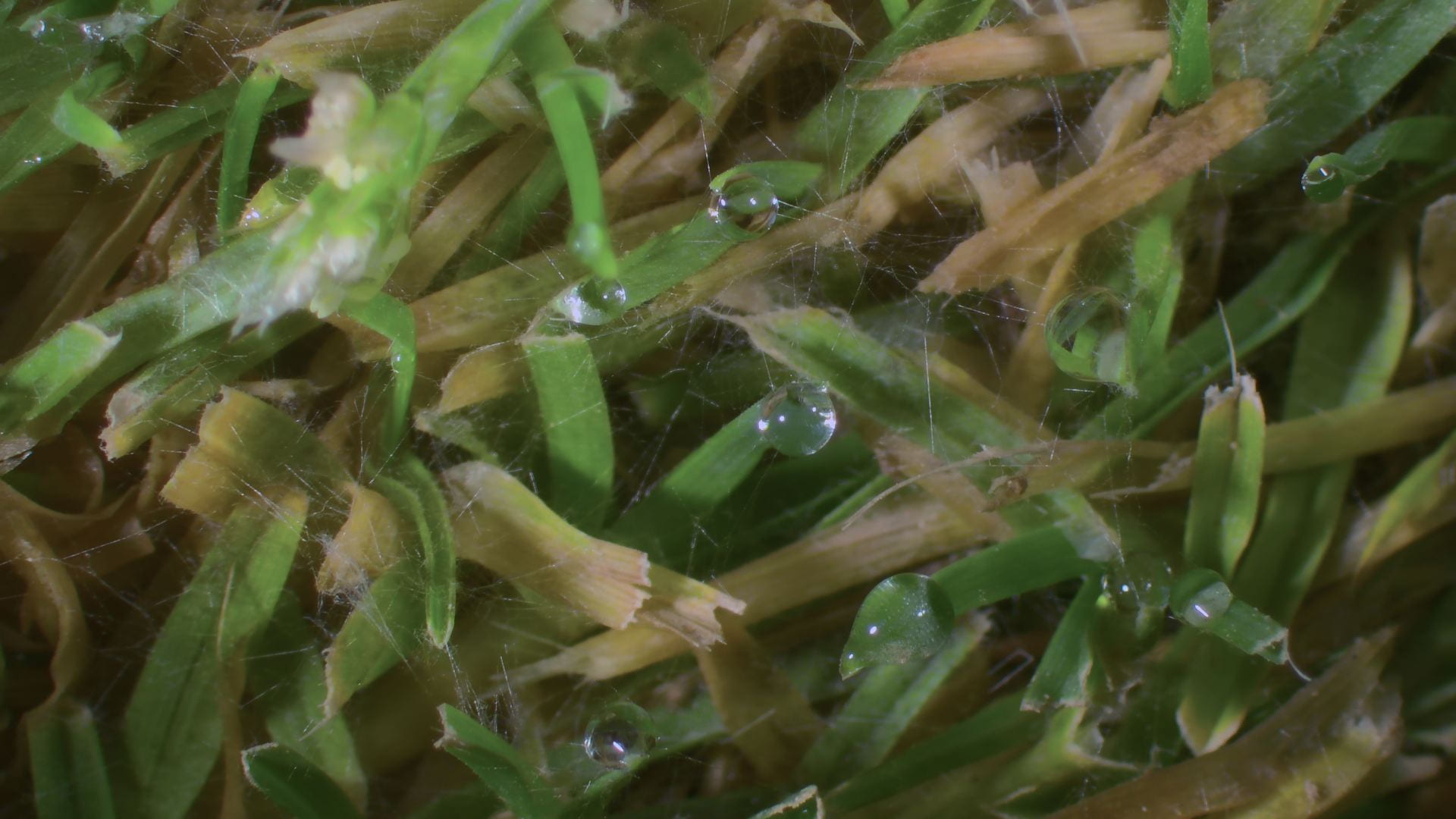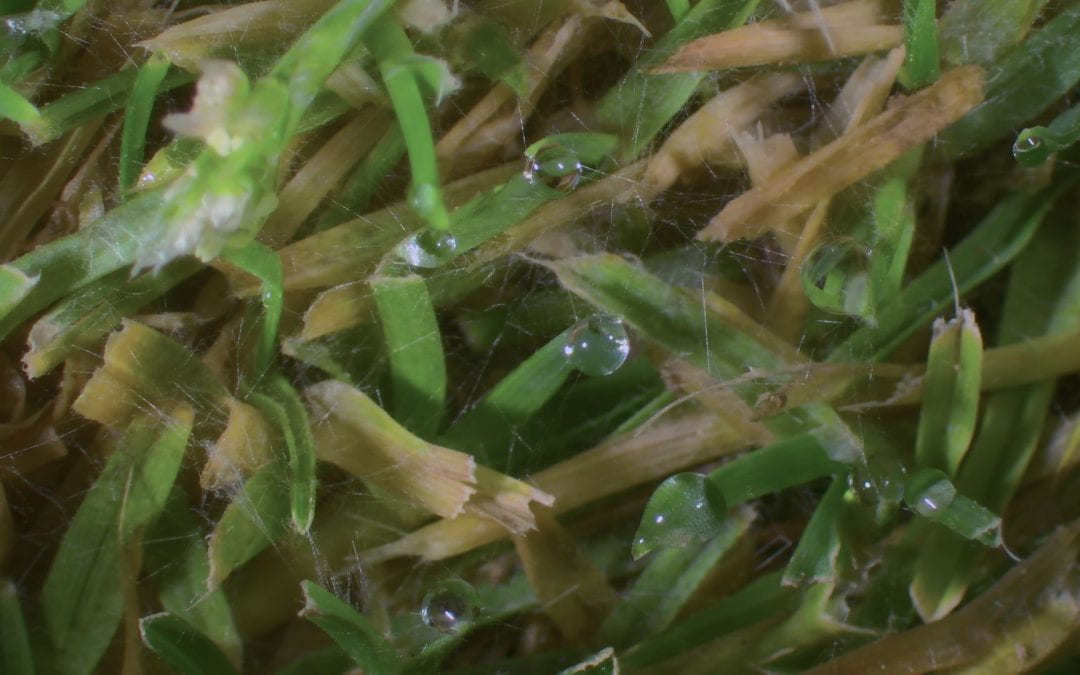
by John Kaminski | Jun 6, 2022 | Disease, Insect, Weeds
Turf pest updates from what we are seeing around the region and in the lab.
Brown Ring Patch to Pythium
Samples in our lab indicate major outbreaks of brown ring patch (aka, Waitea patch) throughout much of the central and western portions of Pennsylvania, with the Pittsburgh area being hardest hit (Fig 1). I wasn’t too surprised about seeing the disease in State College, but felt like it might have been past “prime time” for BRP in western PA. It once again goes to show that we should be predicting disease outbreaks based on weather patterns and not the time of the year. I remember seeing Microdochium patch as a graduate student at UMD this time of the year and everyone thought I was crazy. If you suspect you may have BRP, incubation in a Tuperware container on your desk should reveal the presence of mycelium.
Speaking of Maryland, temperatures and rainfall around the mid-Atlantic have been right for several warmer diseases including Pythium and brown patch. Although we usually talk about July 4th as the hotspot for these diseases, it appears that we are going to see them early so be on the lookout and keep your preventive controls in place where warranted.
Weevil update (from Dr. McGraw)
While trial evaluations are happening this week, there are some early reports that ABW larva are absent from many of the properties he’s visiting in western PA. This may be due to a combination of reduced populations this year or (more likely) the fact that he visits the region twice per week all spring and many of the clubs are following very closely monitored recommendations for their initial insecticide timings. Regardless, there have been reports of damage in other areas of Pennsylvania as well as the surrounding regions of Ohio, New Jersey, Metro New York, and southern Connecticut. If you’re fortunate to not see much damage consider yourself lucky, but keep an eye out on any insect updates moving forward.
Crabgrass and other weeds
Crabgrass is pretty much hitting its stride these days throughout the state and preemergent control is obviously long gone. It is important to note the tillering stage of the crabgrass if you’re going with a post or early-post herbicide as some of these do well with early and late stages, but not those in the middle. One area of interest for us at Valentine is the vast difference in crabgrass populations between our recently renovated fairway vs our established ryegrass fairway. Not surprisingly, the area that was recently renovated has higher populations that are farther along. This once again reinforces the notion that a well-established lawn is one of the best measures to prevent crabgrass populations from getting out of control. Along with crabgrass, we continue to see high populations of dandelion and clover and suspect that if you haven’t had any goosegrass germination yet that you should soon expect it to be emerging.
Fig 1. Brown ring patch symptoms on a golf course fairway.
Fig 2. Mycelium of Waitea circinata, causal agent of brown ring patch, following incubation in a Tuperware container.
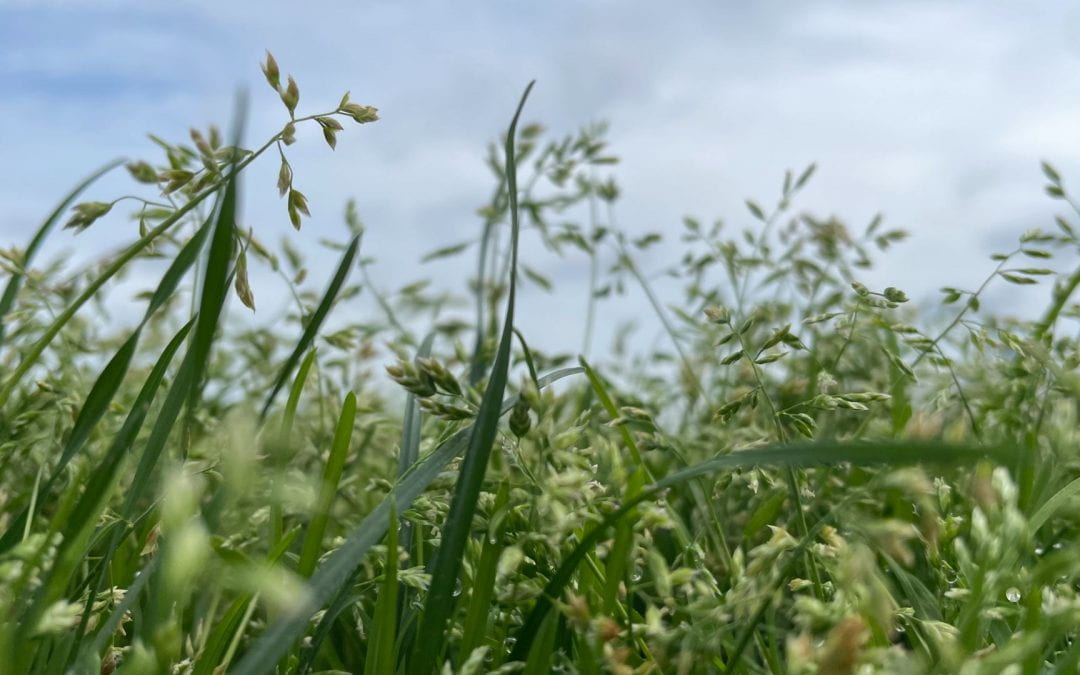
by John Kaminski | May 23, 2022 | Disease, Insect, Weeds
The entire state of Pennsylvania finally received some warmth over the weekend with some regions cracking 90F on Saturday. Although temperatures held in the 80’s on Sunday, this week continues to track back to the high 60’s to mid 70’s. However, warmer temperatures are set to return this weekend and this is where active pests will start to pick up.
Weeds
As has been reported previously, this has to be one of the worst year for Poa seedheads on record. We continue to see seedheads flourish in all areas from putting greens to home lawns. Having said that, seedheads in the lower cut turf does seem to be subsiding quicker than in turf sites maintained at a higher height of cut. The broadleaf weeds are in full swing as well and crabgrass has germinated throughout the state. If you missed your preemergence timing, you might want to consider your postemergent options.
Diseases
We have continued to see Microdochium patch active during recent periods of cooler temperatures in combination with moist conditions. I suspect that this will subside by the weekend as warmer temperatures move in. Dollar spot popped up in Central PA this past weekend and I suspect it’s been in the warmer parts of the states for a bit longer. Look for dollar spot to take off in the next couple of weeks as it becomes the number one nemesis on everyone’s minds. Luckily, we are still early for summer time diseases like brown patch and Pythium, but don’t let the calendar dictate your decisions. Pay attention to the forecast and make decisions accordingly.
Insects
According to WeevilTrak, annual bluegrass weevils are in Stage 3 throughout much of the state with the exception of northeast PA. Traditionally cooler, the Scranton area weevils are stuck in Stage 2. Keep an eye out for any current updates from Dr. McGraw on Twitter.
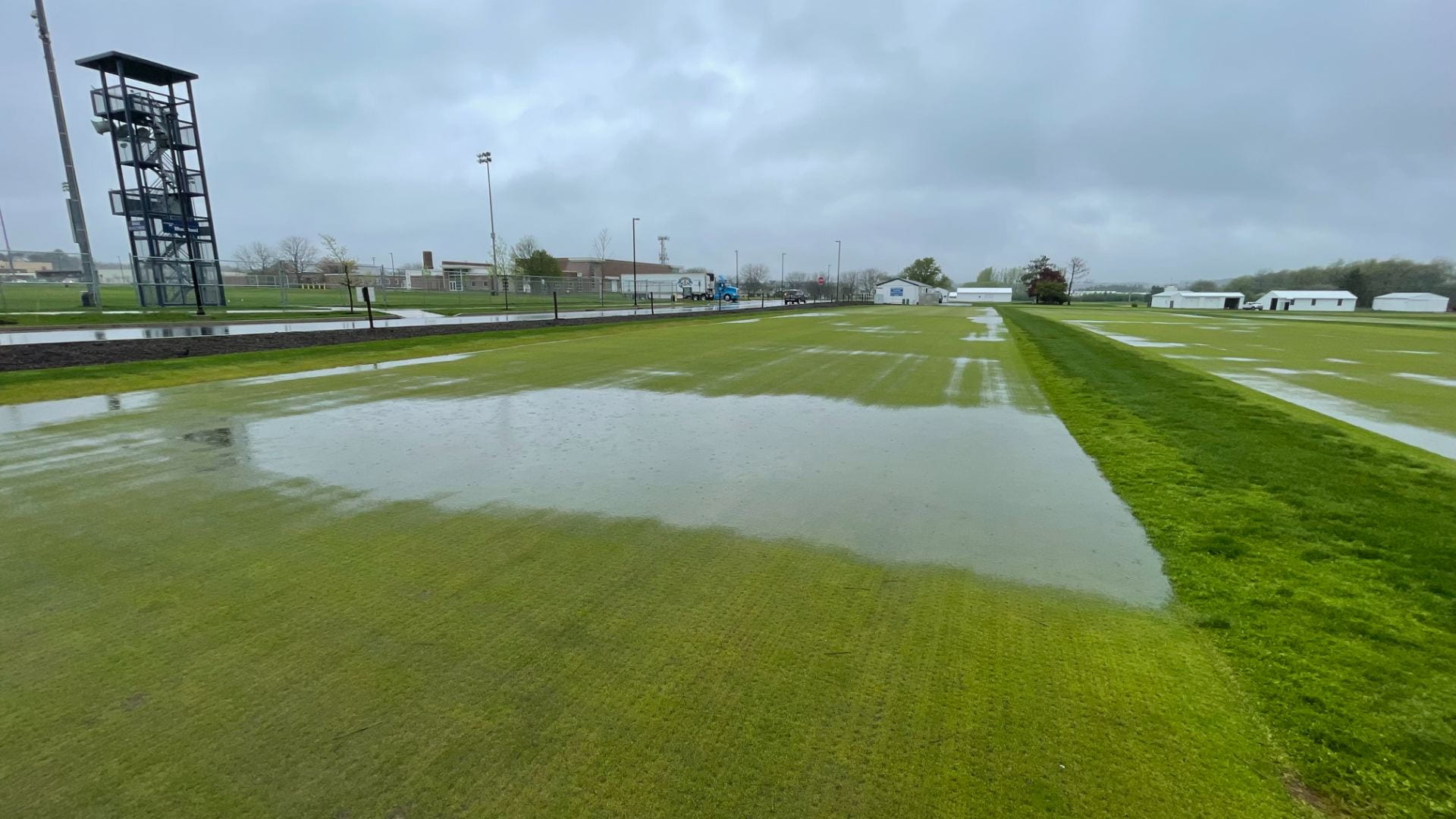
by John Kaminski | May 10, 2022 | Disease, Insect
Colder temps and rain
This spring has seemed to be never ending for turfgrass managers in Pennsylvania and the surrounding regions, but we may be finally getting into some better growing conditions. While many have been battling winterkill caused by some early warm temperatures followed by some deep freezes, it seems that things are starting to look up around the state.
Last week we experienced some persistent rain that placed itself over much of central and eastern Pennsylvania. Relatively cool temperatures meant that the grasses were not growing much and the excessive rain caused some minor headaches. At the Valentine Research Facility, our plots were under water for a period of time. According to Dr. McGraw, the heavy rains also resulted in a massive emergence of the marsh crane fly in central PA.
Diseases developing just south of us
A quick trip to visit Dr. Fereshteh Shahoveisi, the new turfgrass pathologist at the University of Maryland, made me realize just how much of a difference a couple hundred miles south can make on pests. Dollar spot has been active in the Washington, D.C. area for about 3-4 weeks already and they were also experiencing some spring dead spot and large patch damage on bermudagrass and the excessive moisture likely isn’t helping things. Take all patch on newly established bentgrass has also been reported.
Short term outlook
Looking at this week’s weather forecast for Pennsylvania, it looks like much of the state will be in the mid 70s to low 80s with scattered showers. Those of you in warmer areas may need to be on the lookout for dollar spot, but the cooler areas might be a couple of weeks away. As always, the moisture and relatively mild temperatures should have you on the lookout for a variety of early spring diseases including brown ring patch, cool temperature brown patch, and even Microdochium patch. We’re still a few weeks away from the thick of it, but so far this year is looking like it will be a pretty active disease season.
Sending samples
If you have any issues that require a look, don’t hesitate to give us a call. We are happy to take a look at any samples you would like to have diagnosed. It’s always best to have a positive ID to ensure that your management strategies are targeting the right pests.
Submit a Sample
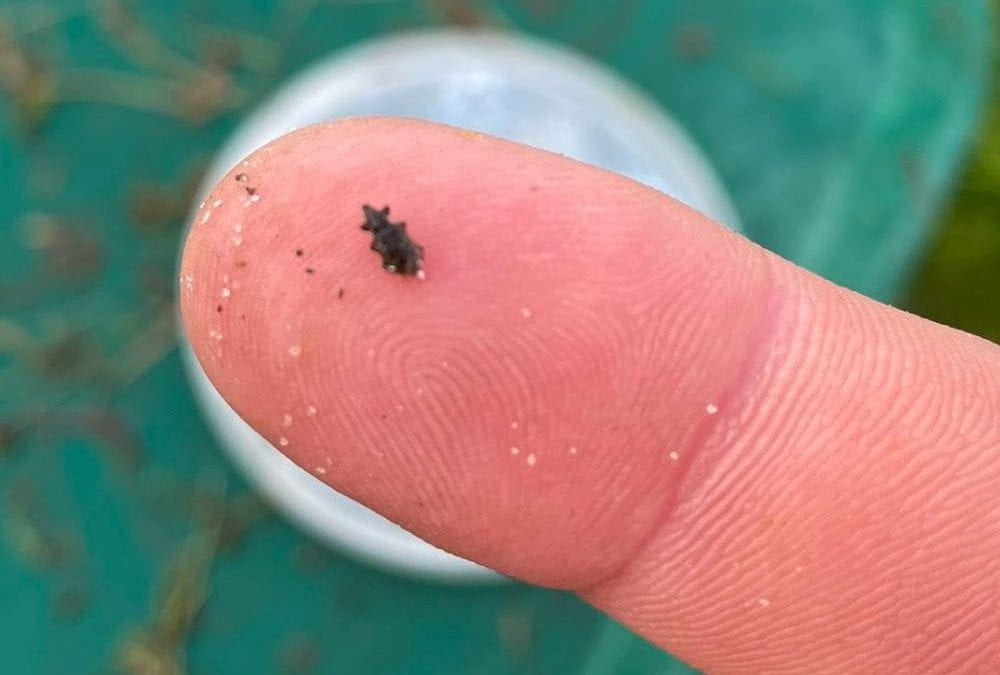
by bam53 | Apr 12, 2022 | Insect
Weevils remain elusive in western and central Pennsylvania largely in part to the extended cold weather. Growing degree day (GDD) accumulations nearly stalled in early April and only 6 GDDs were accumulated in Pittsburgh last week (the week ending on Sunday, April 10). This brings us to a total of 72 for the season. These trends were consistent with what was observed in central Ohio (92 GDD on April 7) and central Pennsylvania (60-70 GDD).
April 11 to 15 looks to be the best period for getting out and scouting for weevils. Thus far, adults have been detected mainly in rough-mown areas and native surrounds off of fairways, though we have collected a small number on tee boxes, collars and greens that are directly bordering an overwintering habitat. It seems likely that the couple of warm days in early- and mid-March forced some of the early migrants out of their hiding spots towards the short turf, but the extended cold period made it impossible for those weevils to move further during the last 3 to 4 weeks.
The first application of the year (Stage 1 – Scimitar® GC insecticide) still is a week or two away. The week of April 18 looks like we are moving back into the cold too. Therefore, it is more likely that our sites won’t reach peak until the week of April 25. Unfortunately, it seems as though many people are thinking that the week of April 11 is the week for the adulticide spray…. or in some instances, time for their second spray! I know it can be difficult to be patient with this application especially after we have had 70°+ days in March, but it will be to your benefit to keep holding off until the entire overwintering population emerges and can be targeted on the short turf.
Although the adulticide spray is called a preventive spray (because it prevents egg laying) this is truly a curative approach against the adults. To be successful with this application, you need to target the exact location of most overwintering adults during the migration because traditional adulticides (organophosphates, pyrethroids) have short residual activity (measured in days). Studies conducted in our lab have suggested that control is dramatically reduced after 24-72 hours, meaning that your best bet is to have a direct hit, rather than hoping an insect walks across the residue within a couple of days.
Forsythia remains one of the best and easiest means for determining when to make an adulticide application. I would recommend that you wait at least until half green, half gold Forsythia (and maybe a little longer) to make this application. Our GDD models have worked well in predicting adult peak between Pittsburgh and Harrisburg in the past, but these models have not been validated in the greater region and GDD estimates can vary greatly based on how the data is collected (we use Spectrum Technologies WatchDog stations, base 50° F, March 1 start date). The “magic number” I look for is on average 150 GDDs, with a range of 125 and 175. Given that we are only at 72 GDD in Pittsburgh on Monday, April 11 this would take a considerable amount of very warm days to move us in that direction. So, please be patient and keep scouting!
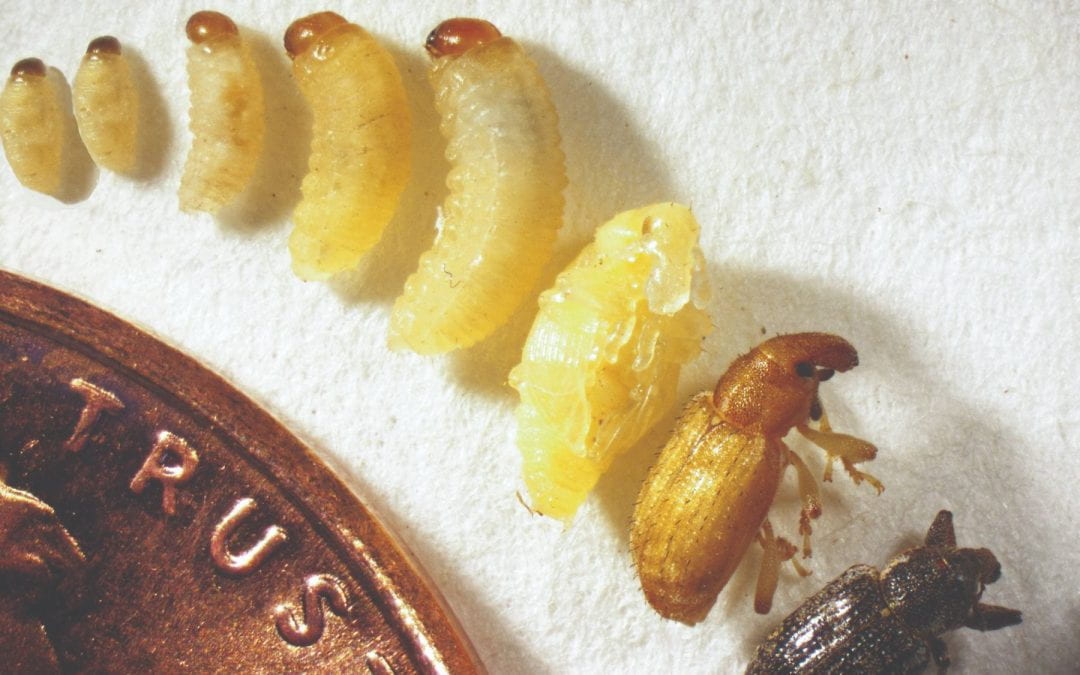
by bam53 | Mar 21, 2022 | Insect
Mid-March is usually one of my favorite times of the year because:
– It is the quiet time between snow melt and insect activity ramping up;
– There is enough sunlight to play golf after work; and
– Other than the Masters tournament, it represents the one time of the year where it’s socially acceptable to watch TV in your office during the workday
But just as quickly as my NCAA pool brackets were busted (less than 24 hours thanks to Kentucky!), Mother Nature decided to put an end to these lazy days of late winter giving us high temperatures and dry conditions across our region during the week of March 15. The turf is beginning to wake up and annual bluegrass weevil (ABW) activity will be close behind.
The Penn State Turfgrass Entomology laboratory will be monitoring four sites for WeevilTrak℠ in 2022: The Golf Club (central Ohio), Butler Country Club (north of Pittsburgh), Country Club of Harrisburg (central Pennsylvania), and Elmhurst Country Club (northeast Pennsylvania). The growing degree day (GDD) accumulations have been steady in the western and central sites since March 1 (when we begin monitoring), with the western sites (The Golf Club, Butler Country Club) experiencing the greatest accumulations.
Penn State sits in a mountainous pocket that creates a cooler environment than Pittsburg, Harrisburg and Philadelphia. I am starting to see the first indications of Forsythia about to break bud in State College (suggesting that overwintering emergence is close at hand). Campus temperature accumulations (37 GDD through March 16) thus far rival that of our warmest spring (2016) since I have been monitoring for WeevilTrak (2014). Many of the 2022 GDD accumulations occurred when we had snow on the ground. I do not know what impact that these early-season accumulations will have on forecasting ABW lifestages or events (e.g., adult peak), but I suspect that a cool down next week might right the ship. I would imagine that this will be the case for many in the swath between Lexington, Kentucky and northeast Pennsylvania that felt the brunt of the March 12 snowstorm. I travelled this path south to Lexington on March 13, then headed north to speak to the Greater Cincinnati GCSA (welcome to the ABW Club!). I was surprised that the snowline essentially stopped just east of Lexington and that most areas to the north were snow-free. Temperatures were in the mid to upper 60s on the 14th in Cincinnati which seemed like a perfect day to get out and start looking for weevils on the move. I did not observe much snow – if any – as I drove east across Ohio. I suspect that our site at the Golf Club in the Columbus area will warm up faster than Pittsburgh and Harrisburg, and therefore will be a nice early warning indicator for people in these areas.


